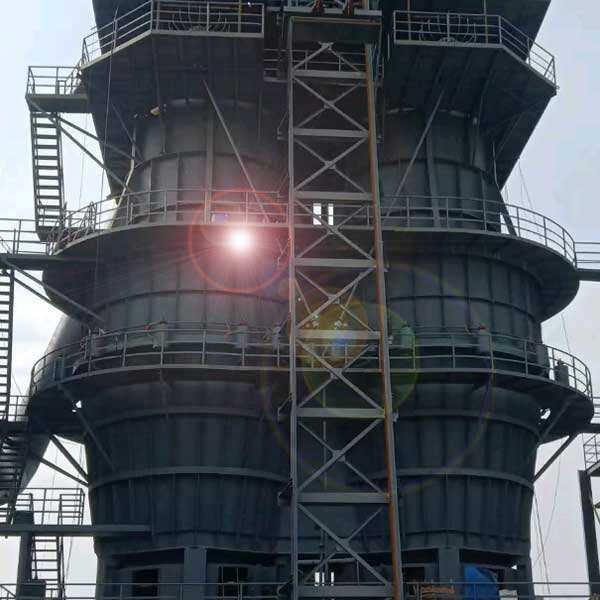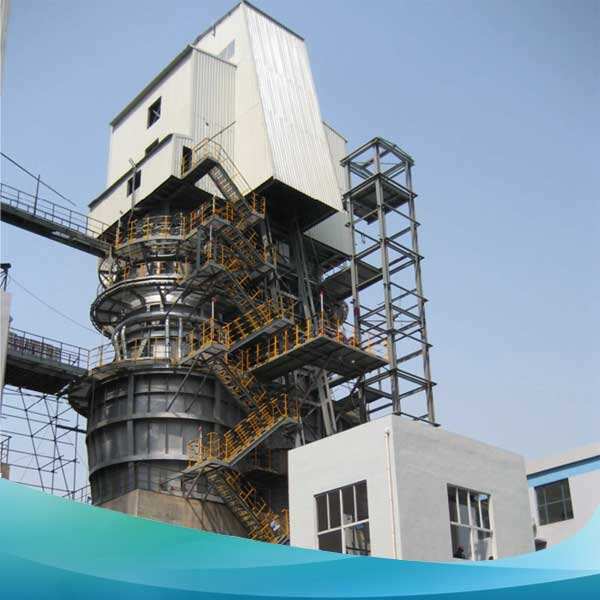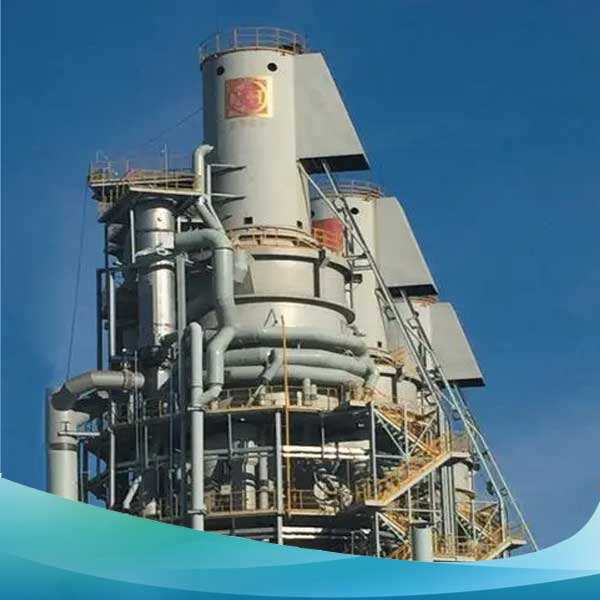회전로: 시멘트 제조 과정 이 내용은 시멘트를 만드는 데 관련된 과정과 회전로가 어떻게 사용되는지 직접적으로 살펴보는 것입니다. 회전로는 전체 생산 라인의 큰 기계 장비이며 다양한 산업 분야에 깊이 영향을 미칩니다. 초고온의 거대한 오븐을 상상해 보세요. 이 원통형 기계들은 축 주위를 회전하면서 그들의 움직임을 이용해 기본적인 재료를 복잡한 구성 요소로 변환합니다. 산업용 회전로는 광물 건조부터 막대한 폐기물 처리까지 다양한 작업을 수행할 수 있어 매우 다재다능하고 유용합니다. 현대식 회전로와 구형 모델 사이의 중요한 차이점 중 하나는 회전 속도에 아주 작은 변화를 줄 수 있다는 점입니다. 이는 가변 속도 드라이브를 사용하여 열 전달을 결합하고 재료가 열 처리를 완료하기 위해 필요한 적절한 처리 시간을 제공합니다. 또한, 쉘 냉각 시스템은 열적 스트레스를 더욱 완화시켜 장비 수명을 연장시키고, 쌍 연소 시스템을 통한 초효율적인 연소 시스템은 배출량을 줄일 수 있습니다. 최신 제어 시스템과 실시간 모니터링 및 데이터 분석을 통해 더 정확한 동적 조정을 기반으로 한 추가적인 운영 효율성 최적화가 가능합니다.
현재 시점에서 회전로는 지속 가능한 산업 및 제조 실천을 돕는 필수 도구 중 일부가 되었습니다. 현대적인 오염 방지 장치인 스크러버와 필터는 이러한 로에서 부정적인 배출을 최소화하기 위해 사용됩니다. 또한, 회전로는 폐기물 유래 연료와 같은 대체 연료를 사용하여 화석 연료에 대한 의존성을 줄이고 환경 친화적인 폐기물 처리 방법을 제공합니다. 석고 로스팅 폐열로 간주될 수 있는 열의 재활용은 탄소 발자국을 줄임으로써(아마도 총 에너지) 더 적극적으로 효율적이며, 이러한 일부 시스템이 적어도 부분적으로 기능을 다시 확립할 수 있습니다.
회전로는 그들의 다용도 때문에 수십 개의 산업에서 사용됩니다. 특히, 회전로는 시간당 1,000톤 이상의 동맥 업그레이드에 사용되며 석회 회수 구역에 유동층을 사용합니다. 폐기물 관리에서는 인큐베이터가 위험한 폐기물, 의료 폐기물, 생활 폐기물 등의 처리 및 처분에 사용됩니다... 회전로는 가축 사료의 사전 조건화, 활성탄 건조, 하수 슬러지 산화와 같은 과정을 수행하는 데 사용되며, 금속 가공에서 다양한 화학 성분을 용융시키는 데도 사용됩니다. 회전로의 유연성은 이러한 다양한 응용 분야에서 원하는 과정을 달성하기 위해 필수적인 요소입니다.
물질 온도를 제어하는 것은 회전로 운영에서 중요한 요소일 수 있습니다. 건조기 제어를 운영하면서 이미 잘 알고 있을 것입니다. 온도는 화학 반응 속도(열 처리)와 물리적 특성 변화(건조) 모두에 영향을 미칩니다. 시멘트/칼슘화 및 기타 공정에서는 제품의 품질이 더 나아지도록 온도를 유지하는 것이 필수적입니다. Pensalab은 로 전체 길이에 걸쳐 안정적인 열 분포를 제공하는 지능형 구역화 및 히터 배치와 관련된 새로운 열 프로파일링 기술을 보유하고 있습니다. 이 방식은 연료 공급, 공기 흐름 및 가열을 제어하므로 일부 잘못된 설정으로 인해 스테인레스와 같은 재질의 최저온도 이하 또는 최고온도 이상으로 인한 열화가 발생하지 않도록 합니다.
맞춤 설계된 회전로는 재료의 적절한 처리에 중요한 역할을 합니다. 이 모든 솔루션은 급료 물질의 특성과 적절한 생산 용량을 고려하여 설계되었습니다. 모듈식 구조를 채택하여 설치와 업그레이드가 용이하며, 장비 사양을 올바르게 설정하여 가장 혹독한 공정 조건에서도 오랜 사용이 가능합니다. 특정 맞춤화가 제공하는 기능성을 활용하는 것은 추가적인 관리 비용도 거의 확실히 가치가 있습니다. 왜냐하면 그것은 단순히 더 많은 자동화를 허용할 뿐만 아니라 매우 낮은 운영 비용으로 유지보수 비용을 절감시켜 주기 때문입니다 - 이는 유리한 ROI 달성에 있어 명백한 이익입니다.
따라서, 결국 회전로가 산업과 환경 보호에서 요구하는 일련의 필요 조건을 충족시킨다는 것이 입증됩니다. 그들은 광범위한 산업 응용 프로그램과 높은 온도 제어가 필요한 고객들을 서비스할 수 있으며, 타협 없는 성능 수준의 물질 처리 기능을 제공하기 때문에 그들의 가치는 급변하는 산업 기술 시대에 오랜 기간 동안 유지될 것입니다. 산업이 더욱 지속 가능성을 추구함에 따라, 회전로는 더 녹색 미래를 위한 가장 선진적인 기술로 자리 잡게 될 것입니다.
다양한 운영 및 설계 방법에 가치를 제공하는 이러한 기술들은 공정이나 제품 중심 측면에서 '어떤 더 오래된 회전로의 핵심을 현대화했다'고 평가받습니다. 가변 속도 드라이브는 고유 조정이 열 전달 시간을 최대화하도록 북구의 회전 속도에 대해 더 큰 제어를 제공합니다. 외부 껍질의 냉각 시스템은 장비의 열적 스트레스를 줄이고 수명을 연장시킵니다. 최신 킬른 역시 최적의 에너지 공급을 위해 최첨단 연소 시스템을 갖추고 있으며, 매년 5~8회 정도 주요 연료 혼합물을 변경하여 배출량을 크게 줄일 수 있습니다. 실시간 모니터링과 데이터 분석은 설정된 모든 요소에 대한 지속적인 주의를 보장하며, 변수가 변경되는 즉시 조정을 통해 정확한 공정 관리를 유지하고 항상 최상의 상태를 보장합니다.

현대 생활에서 회전로의 발전된 형태는 더 이상 가능성의 문제라기보다는 지속가능성이 이후에 발생한 다양한 버전으로 이어지는 불가피한 변화를 추구하고 있다. 이러한 기술로부터 유해한 입자와 가스의 배출은 현대적인 석회 제조 오염 방지 조치인 스크러버와 필터를 장착하여大幅하게 줄어들었다. 또한 화석 연료에 대한 의존도를 줄이는 반복적인 해결책 중 하나는 폐기물을 원료로 사용하는 대체 연료로 작동할 수 있는 능력이다 - 이는 쓰레기를 처리하기 위한 적절한 방법이 된다. 더 나아가 열 회수 시스템을 통해 시스템에서 발생하는 폐열을 포획하여 공정으로 재반영함으로써 에너지 소비를 절감하고 전체 탄소 배출량을 줄일 수 있다.

앞서 언급했듯이, 회전로의 가장 큰 장점은 여러 산업과 응용 분야에서 사용될 수 있다는 것입니다. 그들은 소규모에서 대규모 광산 시장의 현장 분리 단계에서 중요한 부분을 이루며, 필수적인 철 샤프트와 관련됩니다. 폐기물 관리의 맥락에서는 회전로가 안전하게 유해 폐기물(소각/연소), 의료 폐기물(압력 살균 또는 마이크로파 방식) 및 생활 폐기물을 처리하는 데 필요합니다. 식품 및 농업 산업에서는 석회용 회전로 동물 사료나 비료와 같은 제품을 처리하는 데 사용될 수 있습니다; 화학 산업에서는 다양한 반응을 수행하기 위해 사용됩니다. 회전로가 수행하는 다양한 기능들 때문에, 이는 많은 산업 가공 응용 분야에서 필수적인 구성 요소입니다.

회전로에서의 온도장 제어는 이 두 가지 요구사항을 잘 충족할 수 있으며, 이는 직접적으로 화학적 변화와 물리적 특성과 관련이 있습니다. 대부분의 제품(예: 시멘트, 클링커 및 산화된 재료) 생산 과정에서 온도 기반 속성을 달성하기 위해 공정 변수 제어도 중요합니다. 특정 구역과 위치에 맞춰 헤더 요소를 배치함으로써 회전로의 한쪽 끝에서 다른 쪽 끝까지 일관된 열 흐름을 얻을 수 있으며, 최신 기술을 활용한 상세한 열 프로파일링을 통해 이를 수행합니다. 벨트 상에서는 저 에너지 소비로 자동 온도 제어가 이루어지며, 처리 중 과열이 발생하지 않도록 연료 공급 또는 공기 흐름이 실시간으로 조정됩니다(피드백 제어형 블로어를 통해). 또한 선택적으로 직접 가열 또는 간접 가열을 사용하여 열화를 방지합니다.
20년 이상의 경력으로, 석회로 회전로의 개발과 연구에 전념하고 있습니다. 자동화된 시스템으로 최저 투자 비용을 제공하며, 석회로의 수명이 연장됩니다. 우수한 서비스와 고품질의 석회 분쇄기를 통해 신뢰받고 있습니다.
회사는 주로 프로그램 공학, 설계, 장비 설치 및 가동을 담당하며, 에너지 절약형 생태적 석회 수직 구덕의 생산에 도달했습니다. 회사는 다양한 크기의 활성화된 구덕을 건설했으며, 이는 150m3, 170m3, 200m3, 250m3, 350m3, 500m3 등이 포함됩니다. 구덕들은 성공적으로 가동되었으며 놀라운 효과를 발휘했습니다! 최신 기술인 코크스 석회 수직 구덕 기술을 활용하여, 가스 연소 석회 수직 구덕이 회전 구덕으로 발전했으며 여러 회사들과 설계 계약을 체결했습니다.
오랜 기간 동안, AGICO는 전문적인 기술 팀, 성숙된 생산 기술, 풍부한 생산 경험을 보유하고 있으며, 이를 바탕으로 완전한 세트의 샤프트로 생산 기술 관리 시스템을 형성하여 에너지 절약형 환경 보호형 석회 샤프트로 회전로 기술을 완벽하게 만들었습니다. 이 기술은 투자 비용이 낮고 자동화 품질이 높으며 제품 품질이 우수하며 에너지 소비가 적고로 수명이 길다는 특징이 있습니다. 이는 철강, 비철금속, 화학 산업, 금속, 건축 자재 및 기타 부문(심층 가공 등)에서 널리 사용되고 있습니다.
AGICO는 회전로 기술 팀을 보유하고 있으며, EPC 턴키 프로젝트를 전문으로 하며 제조, 설계 설치, 디버깅 유지보수 및 기타 서비스를 포함합니다. 고객의 요구를 충족하기 위해 필요한 기술 지원을 제공하는 포괄적인 사전 판매, 사후 판매 및 사후 서비스 시스템을 제공합니다.